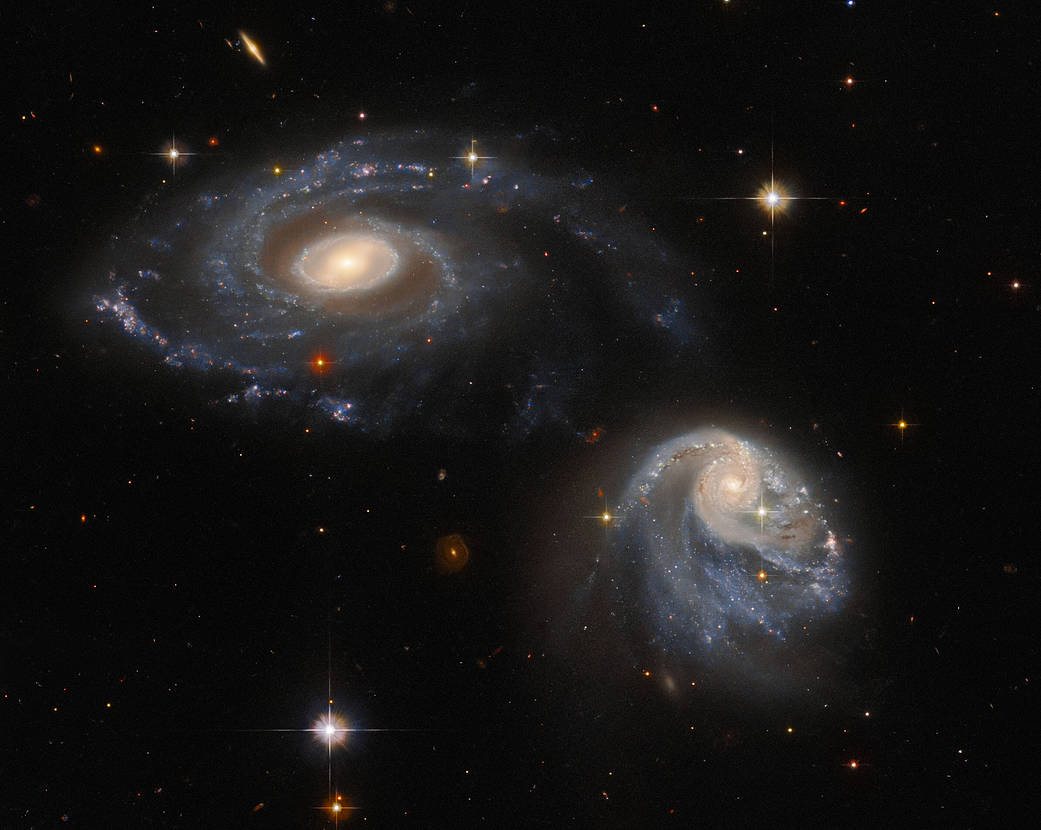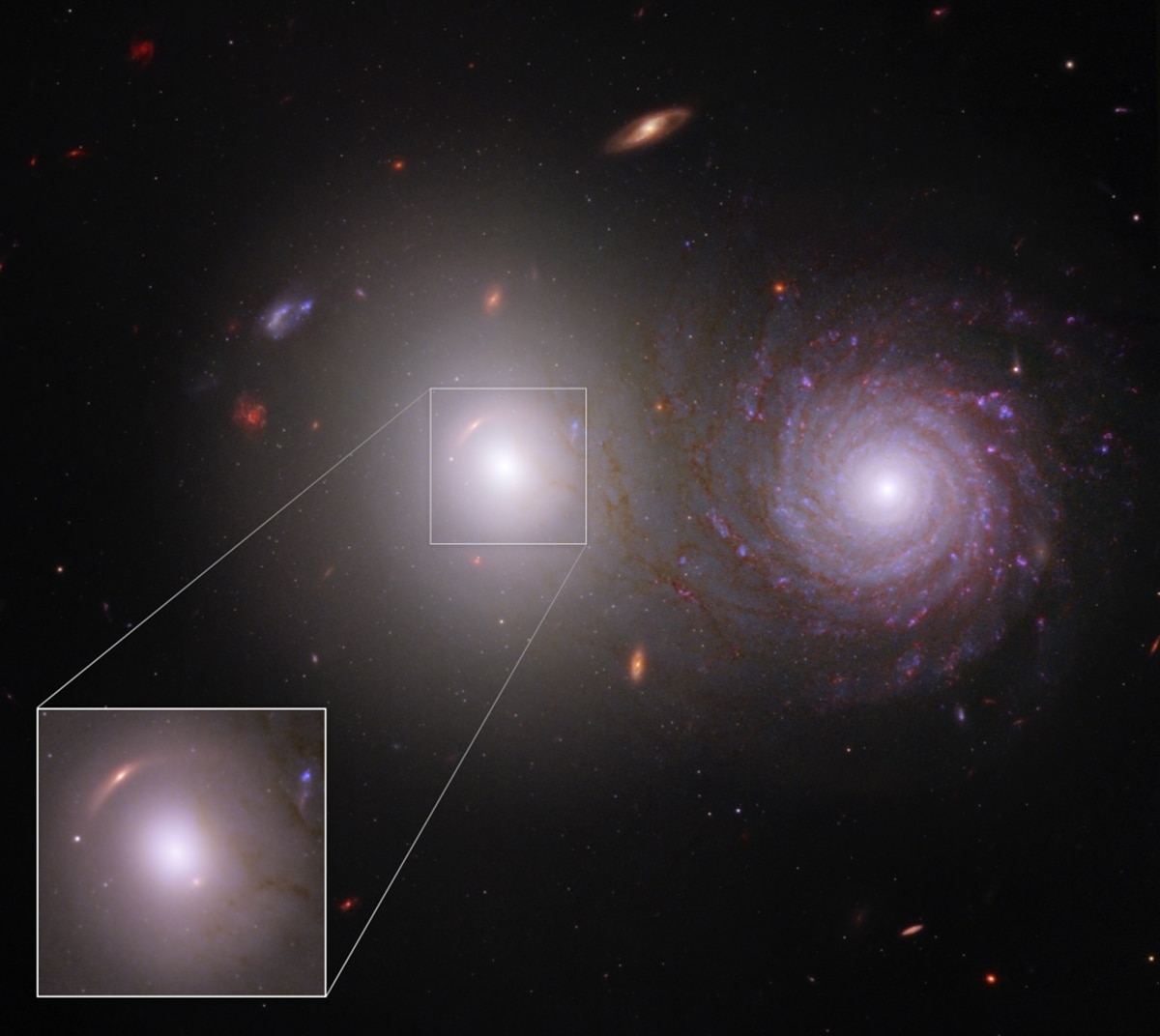On Friday, October 7, NASA released stunning images taken by the Hubble Space Telescope of two interacting galaxies floating side by side. The image was captured by the Hubble Space Telescope with the help of the James Webb Telescope, the most powerful and largest optical telescope in the world. The images used the information gathered by Hubble and Webb in ultraviolet and infrared light, respectively.

Source: NASA
In this picture from the NASA Hubble Space Telescope, the two interacting galaxies that make up the pair known as Arp-Madore 608-333 appear to be floating next to one another.
The two galaxies floating beside each other would appear calm, static and unaffected at first. However, this is not the case. The two galaxies are slowly bending one another due to a mutual gravitational interaction that is upsetting and warping them, and bound to distort them both.
The image was captured by the Advanced Camera For Surveys (ACS) of the Hubble telescope. The ACS replaced the Wide Field Planetary Camera 2 (WFPC2), the previous top Hubble camera. The ACS was designed to survey wide regions of the sky at visible and red wavelengths with 10 times more efficiency than WFPC2.
It was used to capture several of the most remarkable pictures from Hubble, including the most in-depth shots ever taken of the dwarf planet Pluto.
The interacting galaxies in Arp-Madore 608-333 are actually a part of an ongoing endeavor to assemble a catalog of fascinating and intriguing cosmic entities for a more comprehensive research in the future using the Hubble space telescope, the NASA James Webb Space Telescope, and other ground-based telescopes.
The interacting galaxies in Arp-Madore 608-333 are actually a part of an ongoing endeavor to assemble a catalog of fascinating distant cosmic entities for more comprehensive future research using the Hubble space telescope, the NASA James Webb Space Telescope, and other ground-based telescopes.
Astronomers combed through already-published astronomy archives to compile a list of target cosmic entities scattered over the night sky for this catalog. They planned to include entities that had previously been designated as noteworthy and that Hubble could easily examine from any angle.
The infrared photos captured by the James Webb Space Telescope (JWST) reveal substantially more detail in the spiral dusty galaxy. It has another surprise. A phenomenon known as Gravitational Lensing can be seen in the top left corner of the galaxy on the left as a faint red arc.

Source: NASA
Gravitational Lensing is a concentration of mass that exists between a distant light source and an observer that has the power to bend light as it moves in the direction of the observer.
NASA has said that in addition to taking stunning images, Snapshot programs like the one which captured the galactic duo of Arp-Madore 608-333, also allow astronomers to utilize the space telescopes to collect as much data as they can.
After all, the cosmos is a vast wonder about which we still know little to nothing. These exploration programmes will aid in deepening our understanding of the enigma that is our universe.
Comments
All Comments (0)
Join the conversation